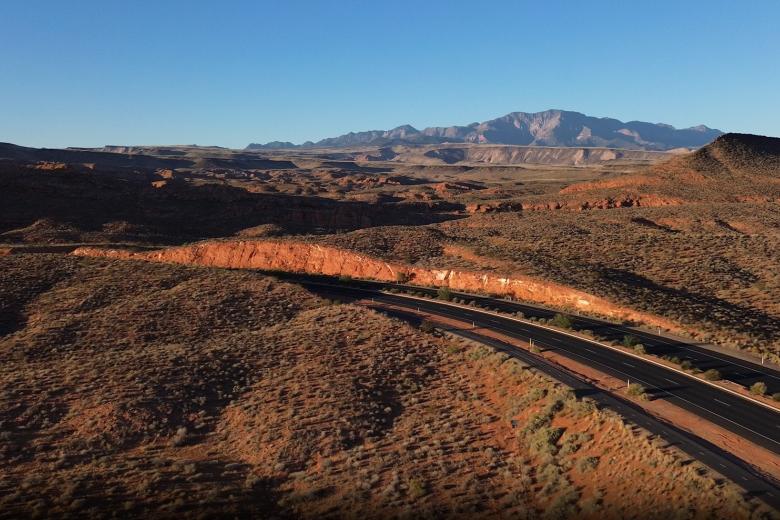BLM, FWS issue final analysis, preferred approach for proposed highway
Organization:
BLM Office:
Media Contact:

ST. GEORGE, Utah — The Bureau of Land Management and the U.S. Fish and Wildlife Service today issued a final supplemental environmental analysis of the proposed Northern Corridor highway in Washington County, Utah. The BLM, in coordination with the FWS, identified a preferred management alternative that endorses improvement of the existing Red Hills Parkway Expressway to ease congestion and minimize impacts to the Red Cliffs National Conservation Area.
The supplemental analysis comes as a result of settlement agreement reached in August 2023 after the federal government was sued over a January 2021 decision by the previous Administration approving a route known as the Northern Corridor across Red Cliffs National Conservation Area (NCA) and approving a habitat conservation plan and incidental take permit for the Mojave desert tortoise.
“Public and stakeholder input was vital to ensuring we had a full understanding of the issues, concerns, and potential impacts for each of the proposed alternatives,” said BLM Color Country District Manager Gloria Tibbetts. “We value the close working relationship with our Tribal, federal, state, and local partners, and for the unique expertise they brought to this process.”
“We remain committed to balancing infrastructure needs with the protection of sensitive species like the Mojave desert tortoise and appreciate the valuable input from the public and stakeholders throughout this process,” said George Weekley, Utah Field Supervisor for the FWS.
The analysis considered:
- three alternatives to establish new roads located completely within the Red Cliffs NCA,
- two alternatives involving modifications to existing roads, and
- one alternative that would terminate the current right-of-way grant.
After reviewing comments received from the public and analyzing the data gathered, the BLM, in coordination with the FWS, identified the Red Hills Parkway Expressway as the BLM’s preferred alternative. This alternative would involve improvements to the existing Red Hills Parkway to convert portions of the roadway to a limited access expressway directly connecting to Interstate 15. This alternative represents the lowest impact to the Red Cliffs NCA and the purposes for which it was designated and is predicted to best resolve east-west traffic congestion in Washington County.
Based on this selection, the FWS’s preferred alternative is to amend Washington County’s Incidental Take Permit for the Mojave desert tortoise to allow potential development on 3,341 acres of non-federal lands southwest of St. George.
This analysis responds to an application from the Utah Department of Transportation for a right-of-way to construct a highway in the Red Cliffs NCA. It also responds to and addresses legal arguments regarding the 2021 Record of Decision approving a highway through the Red Cliffs NCA. The Final Supplemental Environmental Impact Statement assessed potential impacts of the proposed highway right-of-way and alternative alignments on the Mojave desert tortoise as well as other resources such as vegetation communities, sensitive plant species, cultural resources, and socioeconomics.
The analysis and other project-related documents are available on the BLM National NEPA Register. The agencies will issue Records of Decision no earlier than 30 days from issuance of this release.
For more details about the National Environmental Policy Act, please visit the BLM Planning and NEPA page or contact the Red Cliffs National Conservation Area Manager at 435-688-3200 or BLM_UT_NorthernCorridor@blm.gov.
The BLM manages more than 245 million acres of public land located primarily in 12 western states, including Alaska, on behalf of the American people. The BLM also administers 700 million acres of sub-surface mineral estate throughout the nation. Our mission is to sustain the health, diversity, and productivity of America’s public lands for the use and enjoyment of present and future generations.
